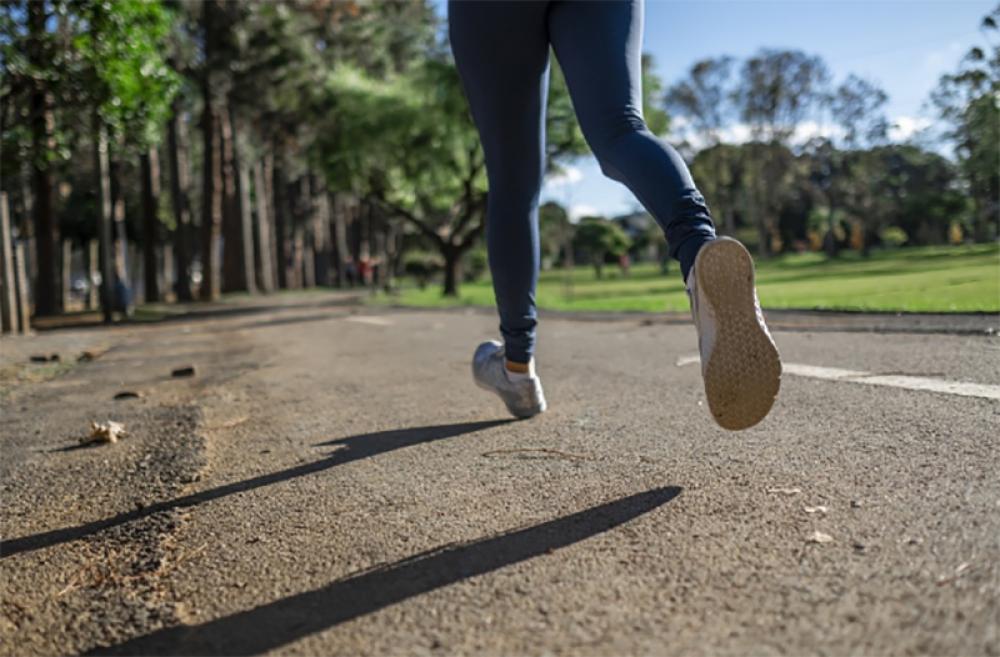Just Earth News | @justearthnews | 27 Feb 2023

Image: Pixabay
Hershey: The 150 minutes of moderate to intense aerobic activity per week that is recommended by the U.S. Department of Health and Human Services can significantly reduce liver fat, according to new research by Penn State College of Medicine researchers.
The team’s meta-analysis of 14 previous studies confirms that exercise leads to clinically meaningful reductions in liver fat for patients with nonalcoholic fatty liver disease, read the Penn State College of Medicine website .
While prior research suggested that physical activity was beneficial, it had not determined the specific amount of exercise needed to make clinically meaningful improvement.
“Our findings can give physicians the confidence to prescribe exercise as a treatment for nonalcoholic fatty liver disease,” said Jonathan Stine, associate professor of medicine and public health sciences, and hepatologist at Penn State Health Milton S. Hershey Medical Center. “Having a target amount of physical activity to aim for will be useful for health care and exercise professionals to develop personalized approaches as they help patients modify their lifestyles and become more physically active.”
Nonalcoholic fatty liver disease (NAFLD) affects close to 30% of the global population and over time, can lead to cirrhosis, also known as liver scarring, and cancer.
There are no approved drug treatments or an effective cure for this common condition; however, research has shown that exercise can improve liver fat, physical fitness, body composition and quality of life for patients.
According to Stine, prior research had not deduced what the required “dose” of exercise was to help patients with NAFLD achieve clinically meaningful improvement — defined as at least a 30% relative reduction of liver fat, measured by magnetic resonance imaging (MRI).
Stine reviewed 14 studies with a total of 551 subjects who had NAFLD and participated in randomized, controlled trials involving exercise interventions. His team evaluated data pooled from all the studies including age, sex, body mass index, change in body weight, adherence to the exercise regimen and MRI-measured liver fat.
The researchers primary goal in the study was to examine the association between exercise training and a clinically relevant improvement in liver fat.
Independent of weight loss, the team found exercise training was 3 1/2 times more likely to achieve clinically meaningful treatment response (greater than or equal to 30% relative reduction in MRI-measured liver fat) compared to standard clinical care.
In its secondary analysis, the team determined what the optimal “dose” of exercise was to achieve clinically meaningful improvements in liver fat.
They found that 39% of patients prescribed greater than or equal to 750 metabolic equivalents of task (for example, 150 minutes per week of brisk walking) achieved significant treatment response compared to only 26% of those prescribed lesser doses of exercise.
This is the same amount of physical activity recommended by the American Gastroenterological Association and the European Association for the Study of the Liver. The results were published in the American Journal of Gastroenterology.
According to Stine, when this amount of exercise was prescribed, clinically relevant reductions in MRI-measured liver fat were achieved at a rate similar to those reported in early-phase NASH drug trials evaluating medications that block fat production.
“Exercise is a lifestyle modification, so the fact that it might match the ability of in-development therapeutics to achieve the same outcome is significant,” said Stine, a Penn State Cancer Institute researcher. “Clinicians counseling patients with NAFLD should recommend this amount of activity to their patients. Brisk walking or light cycling for 1/2 an hour a day five times a week is just one example of a program that would meet these criteria.”
Stine said more research, particularly controlled randomized trials, are needed to validate their findings and to compare the impact of different exercise doses head-to-head.
Kara DiJoseph and Rohit Loomba of the University of California San Diego; Zach Pattison, Alex Harrington, Kathryn Schmitz and Vernon Chinchilli of Penn State College of Medicine also contributed to this research. Penn State researchers have no conflicts of interest to disclose.